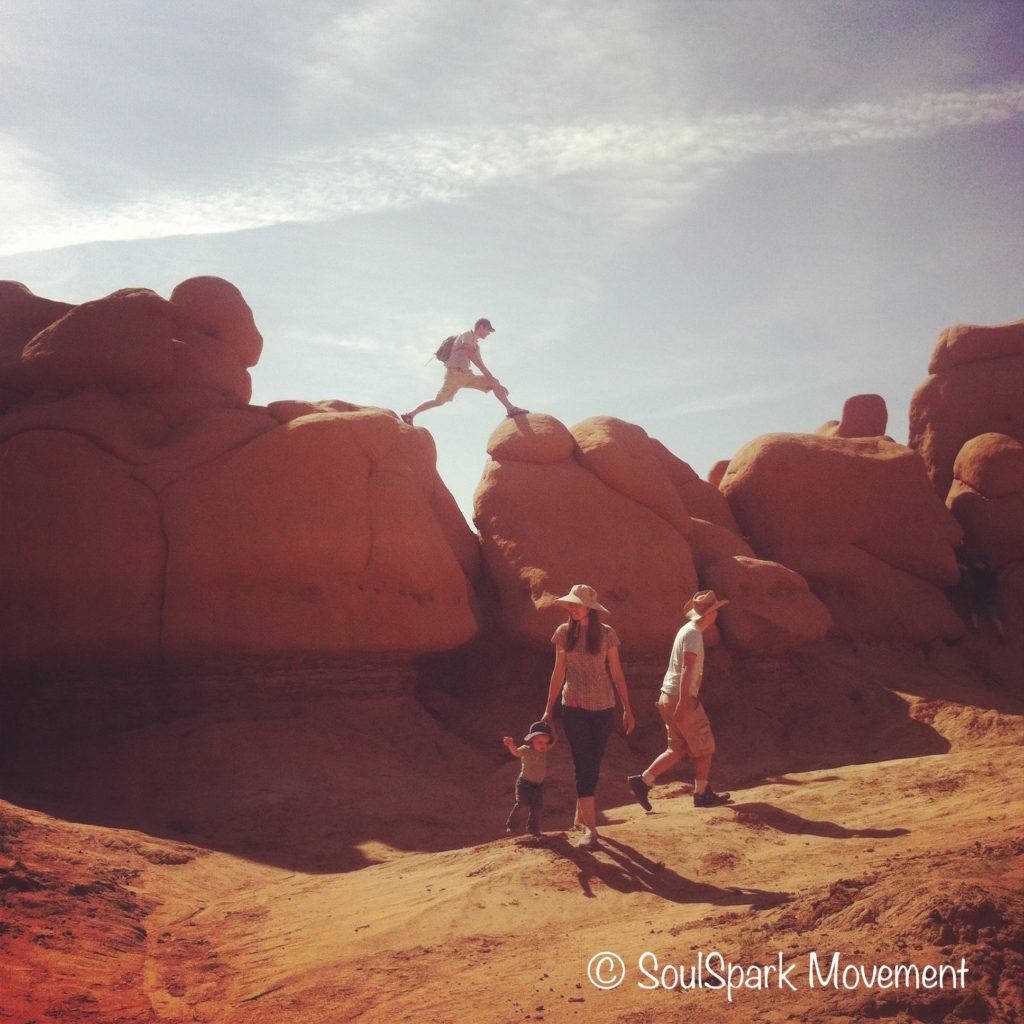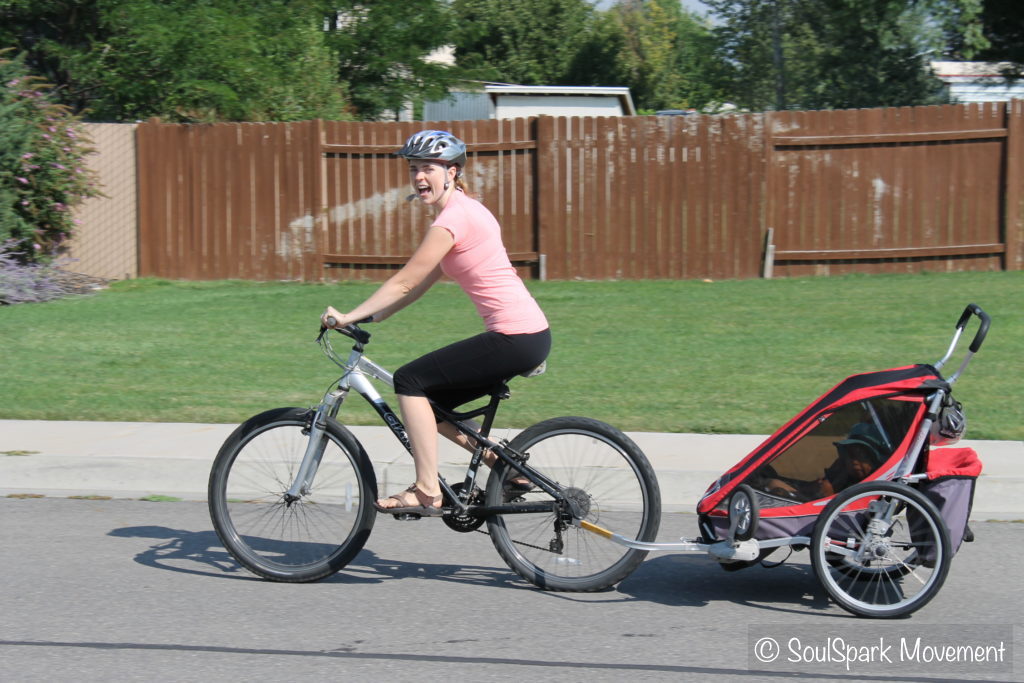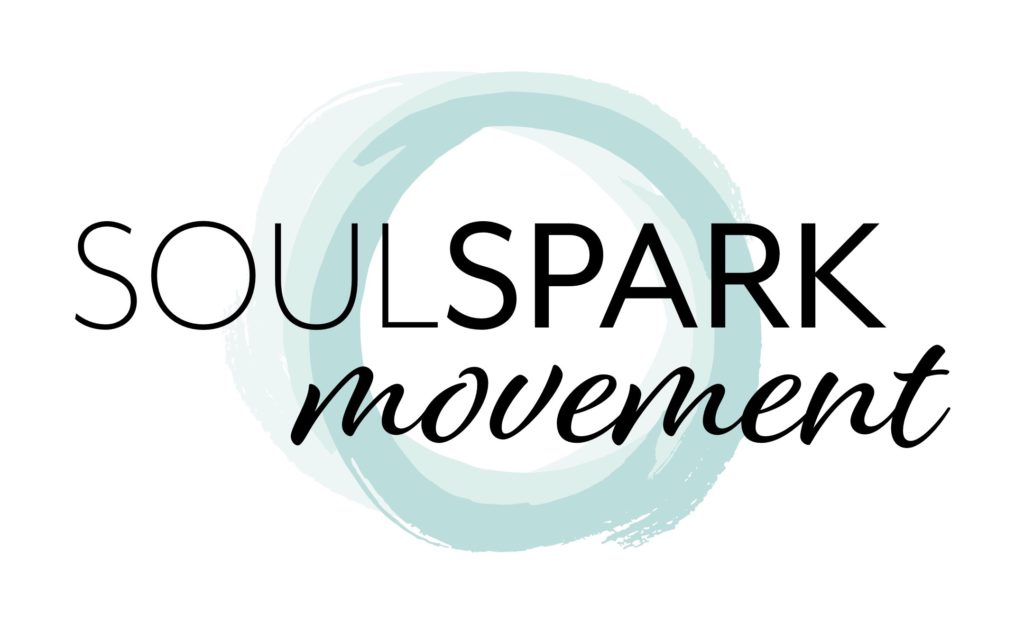A Story From My Childhood
I stood barefoot (as I was most often found) on the concrete in the hot sun, looking at my beloved and also terrifying bike, trying to figure out a safer way to learn how to ride it. I had used my own birthday money to buy that bike and knew it was the one I wanted to minute I saw it at the store. There it was: a dark pink, blue and white Huffy with the words “Country Spirit” written on the plate over the chains. At that age, I didn’t know what that meant exactly, but it seemed like a nice sentiment.
This bike had no training wheels, but that hadn’t bothered me at the time because I’d been riding my next-door neighbors’ bikes with training wheels plenty already. I’d been so eager and excited to learn, to join in on the fun with all my friends cruising up and down the hilly street. But after various failed attempts, I’d decided that learning to ride a bike was not only hard, it was painful and scary. I’d already tried the classic approach: a grown-up walking alongside with one hand on the seat, the other on a handlebar. I’d start to pedal and it would seem that I was getting it. Or so they thought. They always let go before I felt ready and I’d come crashing down, scraped up, and shaken up too. So, I gave up. Sometimes I’d sit on my bike longingly and grip the soft plastic handlebars, pulling them side to side, imagining that I was really riding around like all my friends.

I felt content to just not risk falling again until the kids younger than me on my street were riding two-wheelers. When a seven year-old sees five year-olds being braver than her, she starts to feel just desperate enough to try again. But I wanted to do it on my own terms. I’d do it on my own, where there would be no pressure from my brothers or parents to do what I didn’t feel ready to do. And somehow, I was going to find a way to be safe.
So, there I was, alone on the small cement patio in my backyard, away from others’ critical eyes. My brilliant idea to stay safe was quite simple: I would keep the kickstand down while I pedaled. I thought if I felt myself falling that I could fall to that side and the kickstand would simply catch me and then I wouldn’t get hurt again. That kickstand was already proficient at keeping my bike from falling over, adding a pedaling kid wouldn’t be much harder, right? (You see where this is going, don’t you?)
I sat on the cushy pink seat of my Huffy, gripped the handlebars, and then ever so cautiously started pedaling. I finally felt safe and secure because of that kickstand. Only problem was, as I looped my left foot around towards the back, the pedal was stopped by the kickstand. It wouldn’t budge, no matter how hard I tried to move it. I stood up, guided the bike backwards so the pedals would rotate away from the kickstand and tried again. I attempted this many times, with the same results, over and over. It did not go as I had planned.
The safeguard I had created was actually preventing me from going forward and riding my bike. I slumped back onto the bicycle seat and evaluated my situation again. I knew what had to be done. But I dreaded it. So there I sat, working up my courage. And once I finally wanted to pedal forward more than I wanted to feel safe, I nudged that kickstand up out of the way, took a deep breath, and pedaled. And surprisingly enough, I didn’t fall. I rode my bike around that little cement pad in amazement. I had actually ridden my bike. And once I did it, I was struck by how easy it really was. All that fear was behind me. Since I couldn’t contain my excitement any longer, I ran into the house and gathered everyone that I could to come and witness my triumph over that two-wheeler.
A Useful Lesson
This memory from my childhood has been standing out to me lately, and as I’ve been turning it over in my mind, I’ve learned some useful lessons.
This is an example of how I tend to approach life: cautious to the point of crippling my potential. I’ve often longed to do big, exciting things, but I let my fear take over and have many times only proceeded if I knew that there was something there to catch me. It hasn’t got me where I’ve wanted to go really. Now, do I act this way all the time? Of course not. But often enough that I can see a definite pattern has formed.
Any of my movement teachers could tell you this about me. In dance it looked like not going fully upside-down when I supposed to or hanging back whenever there was a lift, unless, of course, I could be the base. And now in yoga, it looks like taking handstands by the wall. All of this means that maybe I don’t fall, but I also never fly either.
There I am, still trying to pedal with the kickstand down.
Now, this trait of mine may be less obvious to those who have only conversed with me, or maybe only interacted with me in sports, where I was much less cautious because my competitiveness overruled my tendency to shrink away. But I look back at my life, and at how I often still to this day function, and there it is, safety nets peppering my existence. You may not know, but I know how frequently I hang back, afraid to show I care, to engage in relationships, to share my unpopular opinion, to risk being seen and heard and not accepted or treated kindly. It’s a bit overwhelming when I think of how far I have to go. But my desire to move forward and be seen is daily growing stronger than my desire to play it safe.
Here’s the Important Part
We move the way we live. You know how they say wherever you go, there you are? Well, whenever you move your body (or don’t), there you are. I’ll say this again, just to let it sink in a bit more: you move the way you live.
You can learn a lot about yourself by observing how you approach movement.
Your body movement can be like a mirror. If you look in it, you can see your inner world: your thoughts and feelings, your beliefs about yourself and your place in the world. And all of that is on display for all to see. You cannot hide what’s going on inside you. Not really. Because your body never lies. Especially not to those who are paying attention.
How to Begin to Learn from How You Move
Now, since you are new to this vast topic (trust me, there is so, so much to learn here), I am just going to give you an introduction to this life-changing idea. We’re only going to be able to skim the surface.
As it is in many paths we take to lasting change, the very first step here is just observing yourself. Don’t pass judgement. No right or wrong here. Just try to notice what your tendencies are. Here are some prompts to help you get started:
- Begin to notice what you tend to do when approaching any new movement (I mean movement in the broadest sense of the word, be it exercise, play, work, or chores. Really any time you move your body in a new way). Are you cautious? Or do you just go for it? Do you find ways to play it safe? Are you self-conscious if others are around? Why or why not? Do you end up just observing and thinking through it, but not actually doing anything? Does it depend on the movement? How so? What goes on in your head? How does your body respond to all of this?
- Notice how your body responds to situations you find stressful. Is there a place that you usually carry tension? Where do you feel it in your body when you are hit with painful memories? What about when you experience powerful emotions?
- Observe the habitual way you carry yourself around. Do you tend to slump or do you rigidly hold yourself upright? Are there any parts of your body that tend to lead you forward (or that do most of the work) when you stand and walk? Are there parts that you leave behind?

These are just some of the things that you may start to consider. Maybe you have some body or movement experiences that really stand out to you, like my experience of learning to ride a bike. The point is to be curious. Do you notice any habits in your way of moving and being in your body? (And if you don’t notice any, I promise they are there, because we all have them, you may just not have developed the observation skills yet. If you want to learn, you will be able to with time. Just keep coming back here.)
Once you’ve identified even just one habit or pattern, you can then ask yourself: how has this served me? What reasons could there be that I developed this way of moving? The answers may give you clues to not just your movement patterns, but your patterns in approaching life as well. Think it over and see how the way you move is a reflection of how you live.
Okay, Now What?
After you’ve noticed these things, you now get to decide what the next step is for you. Ask yourself, “Is this way of moving and being still serving me now?” If it is something that you feel is serving you in your life now, then great!
If not, are you ready to change it?
Movement can be your ally here. Because not only can it reflect your inner world, but it can also change it too. So, change something. Next time you are trying a new kind of movement change how you approach it. Try a new way of carrying yourself around. Maybe you can even catch yourself in the moment and give your body a different option when it wants to respond to stress in a habitual way.
If you’re feeling stuck or don’t quite know how or what to change, movement therapy may be just what you need. I love working with clients to help them find other ways of moving and being.
As you try to move differently you will learn even more about yourself. You may realize how deeply ingrained those patterns are. If you have a particularly emotional response you will learn more about what those patterns in moving have meant to you in the past.
You’ll find that as you change your movement patterns, you can change the way you engage with life.
I know that movement is not the only in-road to change. I am a huge fan of reading books to learn more, of journaling to get to know yourself, of meditating, of practicing communication better with loved ones, even of going to therapy if you need it. But I do know that if you do not in some way include the way you move in that change, whether directly or as a by-product, the change is not real and will not last.
So for me, as a child, every time I zoomed down a hill on that little bike, or when I climbed high into a tree, or tackled one of the boys I played football with, I was developing my confidence and a clearer sense of self. Taking physical risks and succeeding taught me to trust and believe in myself. But when I didn’t, and used a safeguard, I reinforced that weakness.
Nowadays, I’m working on changing how I approach movement to help me overcome my tendency to allow safeguards to hinder my progress. Some days it feels like slow going. But the boundaries my fears have created are shrinking because I’m starting to push them back. As I keep fear and doubt from making my movement choices, I learn to do that mentally, emotionally and spiritually too. I learn from my physical and emotional responses to these things how deep the changes are, or aren’t. The point is, I’m ready to move forward. And for me right now that means risking falling down.

Because you can’t pedal with the kickstand down now, can you?
What about you? What have you learned from how you move? Do you also try to “pedal with the kickstand down?”
Save
Save
Save
Save
Save
Save
Save
Save
Save
Save
Save
Save
Save
Save
Save
Save
Save
Save
Save
Save
Save
Save
Save
Save
Save
Save
Save
Save
Save
Save
Save
Save
Save
Save
Save
Save
Save
Save
Save
Save
